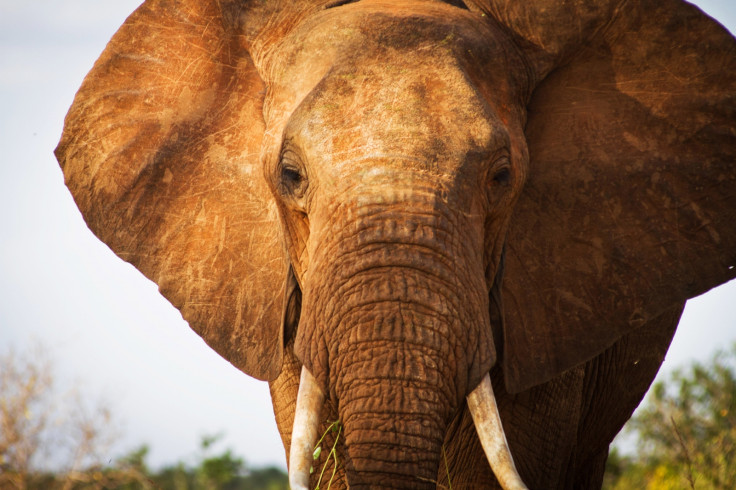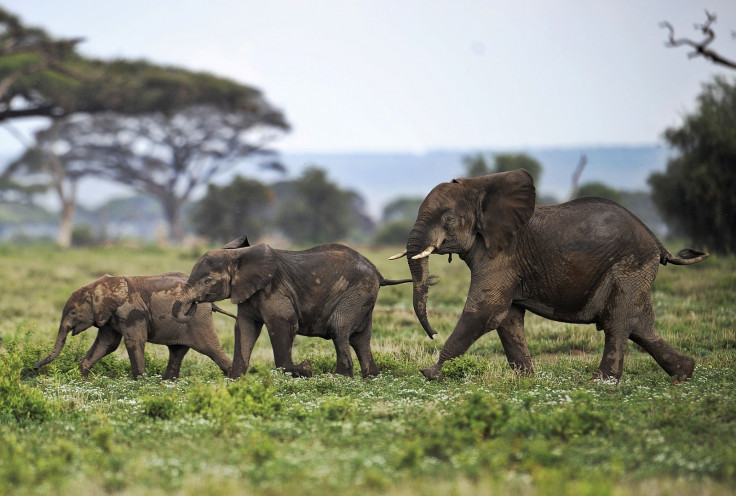World Elephant Day 2015: Facts about conservation and protection

The escalation of poaching, habitat loss and the ivory trade are just some of the major threats to African and Asian elephants. On World Elephant Day, an international event held annually on 12 August, conservationists hope to raise awareness of the plight of elephants and focus on greater protection of the world's largest terrestrial animal.
More than 65 wildlife organisations across the world support the day to spread knowledge about the conservation of the creatures. Goals include working towards better protection for wild elephants, improving enforcement policies to prevent the illegal poaching and trade of ivory, conserving elephant habitats, better treatment for captive elephants and, when appropriate, reintroducing captive elephants into natural, protected sanctuaries.
Without intervention, both African and Asian elephants face extinction– with African elephants classified as "vulnerable" and Asian elephants "endangered" on the International Union for Conservation of Nature's Red List.
African elephant population was about three to five million in the last century, but was severely reduced to its current level because of hunting. In the 1980s, an estimated 100,000 elephants were killed each year and up to 80% of herds were lost in some regions.

The demand for ivory on black markets, of which China's is one of the largest, is a predominant reason for the illegal poaching. In Kenya, poaching has spiked sevenfold between 2007 and 2010, and since 2012, more than 400 elephants have been killed.
Conflict with humans is also a significant concern, as human populations increase and forest-cover decreases, forcing elephants into close proximity with human settlements.
As human populations have expanded, the habitats of African elephants have been converted for settlements, agriculture and developments. The fragmentation of their habitats makes breeding difficult and allows poachers to more easily find the animals and set traps.
According to WWF, there are between 40,000 and 50,000 Asian elephants left in the world. The three subspecies of Asian elephant – the Indian, Sumatran and Sri Lankan – used to roam across most of Asia, but now they're restricted to just 15% of their original range, largely due to habitat loss.
Elephant facts
Female elephants live in a herd of about 10 individuals led by the most experienced matriarch, whereas the males are normally solitary and move from herd to herd. The females in each herd help each other find food and care for calves.
Elephants and humans are the only animals known to have death rituals. If an elephant becomes unwell, members of the herd will bring it food and help to support it as it stands. If it dies, elephants often dig a shallow grave and cover the body with soil or branches and can show signs of depression.
A typical elephant brain weighs 5kg and has more complex folds that other animals, with the exception of whales, which is thought to be a factor in their intellect. They have a more developed hippocampus, a brain region responsible for emotion and spatial awareness, showing grief, cooperation, self-awareness and humour.
The trunk of an elephant is particularly dexterous and in captivity can even be used to open locks.
Elephants can be distinguished by the number of toes on their feet. The African forest elephant and the Asian elephant both have five toenails on the front feet and four on the back. The larger African bush elephant has four or five on the front and three on the back.
© Copyright IBTimes 2025. All rights reserved.





















